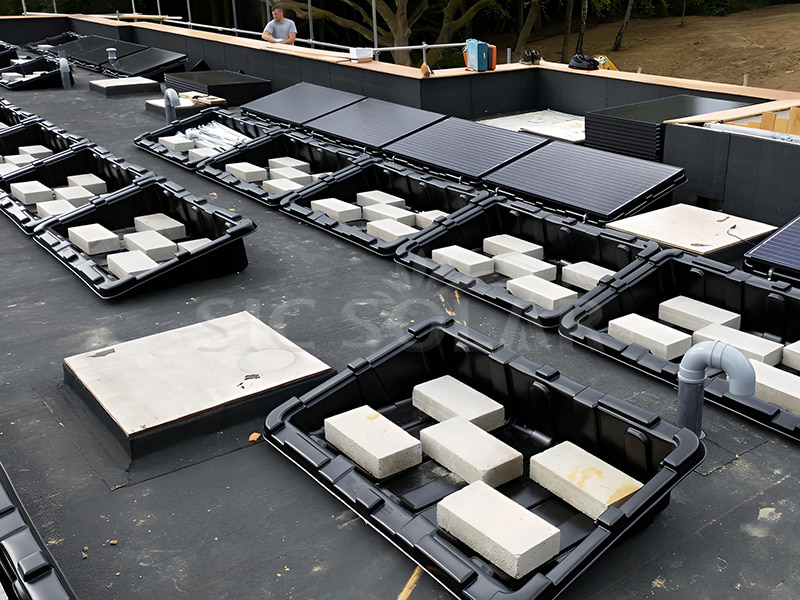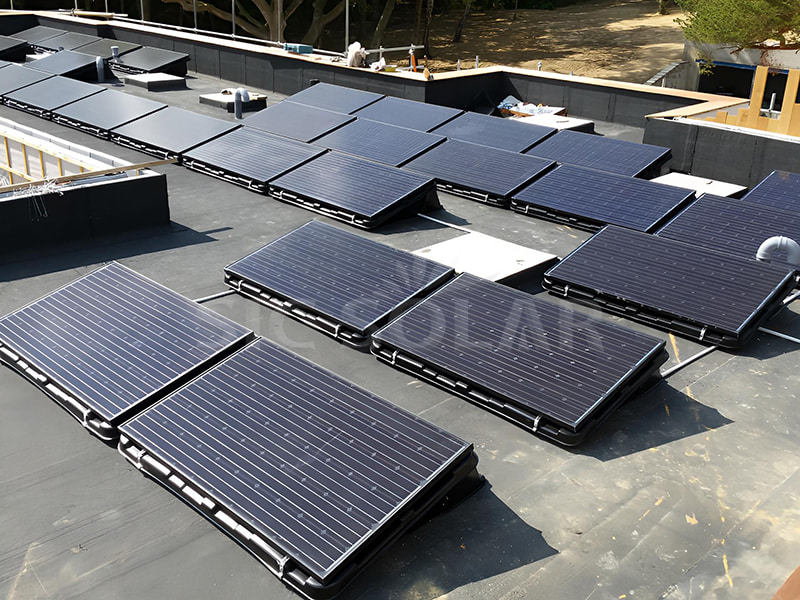1️⃣ Prepare the roof: Clean the roof surface and ensure it can support the ballast and solar panels.
2️⃣ Install the brackets: Install the plastic ballast brackets according to the correct solar panel spacing.
3️⃣ Add ballast: Fill the trays with the required weight of ballast (stones or concrete).
4️⃣ Install the solar panels: Use the provided clamps to secure the solar panels to the brackets.
5️⃣ Final check: Ensure the solar panels are correctly aligned and the entire system is stable.
☆Easy to use- Only two components, Plastic Ballast pan and end clamp.
☆ Flexible position planning - Plastic ballast frame could be extended according to your installation site.
☆ Ballast design - Suit for any flat surface without damaging any surface
Q1. Is there any wind speed and snow load test?
Yes.
Q2. Is there any certification?
Yes.
Q3: Could the tilt angle be changed? Like reduced to 15°?
The mold is fixed 18°.
New mold need to be opened for other angle. The cost is too high to open for small qty.
Q4: Is the PP mount have request on solar panel size?
For panel put in horizontal, the panel width should be 992-1010mm. Other panel width need to get a adapter.
For panel put in vertical, no request.
Q5: Does the price for the item comprehensive of clamps and any other material needed to mount the system?
Yes, The price included the clamps to mount panels, which is complete, except for the ballast gravel.
Q6: What will be excluded from the final DDU quotation (ex. customs clearance / european due taxes)?
With DDU terms, only the import taxes and VAT are not included, 6.5% for european countries.


